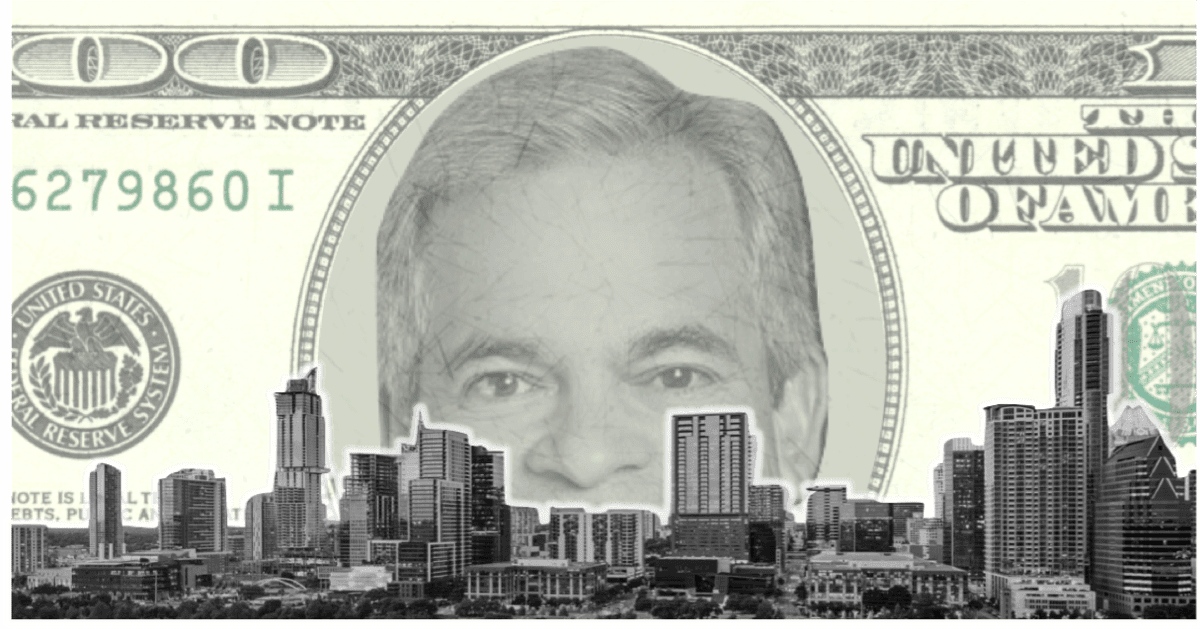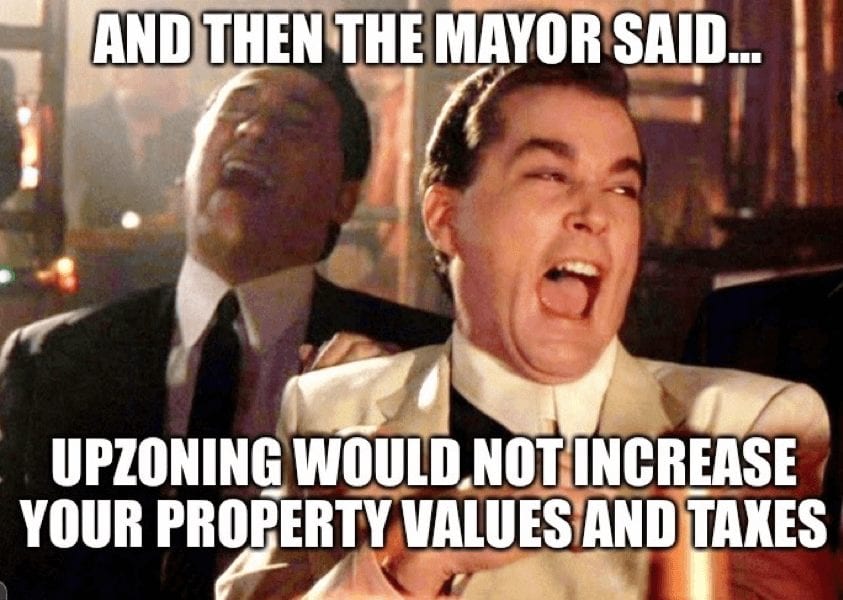
During an Austin City Council work session held last month, Mayor Steve Adler claimed it was “crystal clear” that the controversial rezoning plan proposed by City Hall won’t lead to higher property taxes.
Our mayor is trying to obscure the truth.
If the Austin City Council approves the rezoning plan, the effects on local properties and taxes will be dramatic. Individual residential lots will be rezoned to allow a minimum of three homes on each, effectively eliminating single-family neighborhoods citywide. In the city’s so-called “transition zones,” the plan will allow buildings up to 45 feet tall on some lots, with up to 10 dwelling units on each. Click here to see what the new structures might look like.
Here are three ways the next CodeNEXT will impact property taxes in Austin:
Contrary to the mayor’s claims, the city’s rezoning plan will definitely increase local property taxes—and the problem is likely to hit renters and small businesses first.
If it’s approved, the City of Austin’s rezoning plan will greatly expand what can be built on our community’s residential and commercial lots, increasing land values and taxes. How much those values rise—and how quickly it happens—remain to be seen.
Adler has attempted to dodge the issue by citing Chapter 23 of the state’s property tax code, a law that keeps tax assessments on owner-occupied structures (known as “homesteads”) from rising too quickly. The mayor and his allies claim the provision will stop the expensive, multi-unit developments allowed by the rezoning plan from inflating homeowners’ tax bills.
Adler failed to mention that homestead protections don’t apply to rental or commercial properties.
More than 20 percent of single-unit structures in Austin are occupied by renters, and in some neighborhoods renters account for more than half of residents. When the rezoning inflates their landlords’ tax bills, those increases will be passed on in the form of higher rents, exacerbating Austin’s already-epic displacement crisis. Property appraisals in East Austin are already experiencing double-digit appreciation, and rezoning those areas will pour gasoline on the gentrification fire. Small businesses will face the exact same problem—so if the city’s rezoning plan is approved, Austinites are sure to see more headlines like this one.

Homeowners will feel the pain more slowly, though they’ll need to watch nearby home sales to make sure their own tax bills don’t jump.
If the rezoning plan goes into effect, Austin is likely to be flooded with land developers who bid against one another for existing homes in hopes of replacing them with as many luxurious housing units as the new code allows (a pattern verified by this study, which found that plans like Austin’s mainly lead to “building high-end housing in desirable locations”). Some of the redevelopments may happen quickly, and some of them may take months or years.
Either way, when the Travis County Appraisal District (TCAD) appraises local homes, the agency is likely to unknowingly use some of these inflated, investor-driven sales in its computations. Problems like these could drive existing homeowners’ tax bills to the legal limit, year after year.
It will be up to those homeowners to fix the problem: They’ll need to visit TCAD’s appraisal review board every year to show it which nearby homes were sold with redevelopment in mind. Otherwise, these Austinites are likely to face the biggest tax increases allowed by law.
The rezoning plan is Adler’s attempt to do an end-run around the Texas Legislature’s new cap on local taxes.
Some Austin homeowners believe they’re protected by the 3.5 percent property-tax cap recently imposed on Texas cities by the state lawmakers. Not true. The new law prevents taxing authorities from increasing their overall tax revenue more than 3.5 percent annually without holding a referendum, but it does nothing to cap individual bills paid by homeowners.
More important, the new law exempts taxes collected for new construction from the revenue figures that cities and counties compile every year. In other words, the City of Austin can get around the tax cap by encouraging the demolition of old homes and businesses and the construction of expensive new ones, which is exactly what the next CodeNEXT is designed to do.
The city’s staff have promised to release a new rezoning map soon and the latest text of the plan afterwards. Adler wants to hold an intermediate vote on those items in February, giving Austin residents only a short time to review them.
In the meantime, check our map to see how the rezoning plan impacts your property and neighborhood. These renderings show the types of buildings that could start appearing in your area.
Homeowners, renters, and business owners opposed to the plan can continue to file official rezoning protests until the Austin City Council’s final vote, currently scheduled for March. Once you protest the rezoning of a piece of property, Community Not Commodity’s legal team believes the City of Austin will be unable to rezone it without a vote of three-fourths of the city council (9 of 11 votes), rather than a simple majority.
Together we can build an Austin for everyone!